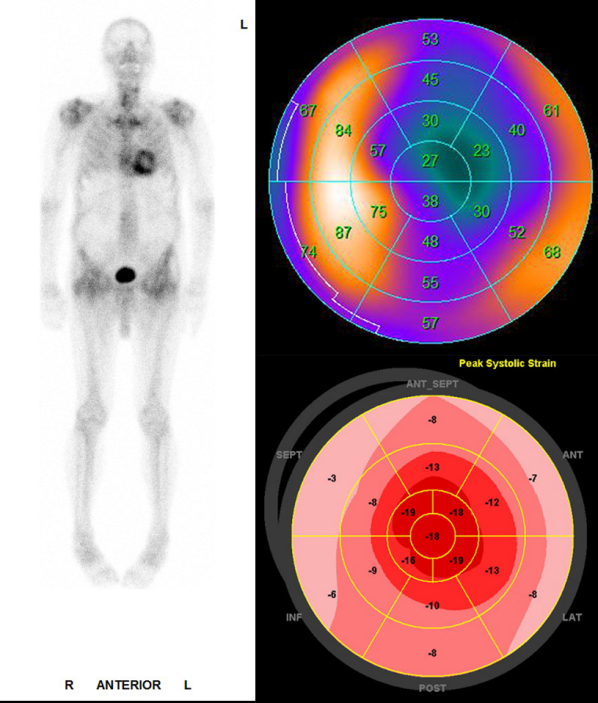However, ATTR amyloidosis, in particular, can be easily diagnosed using a simple skeletal scintigraphy. Although it is still unclear by which mechanism the bone-specific tracers (e.g. DPD) attach to the amyloid in the heart, the skeletal scintigraphy shows a positive predictive value of 100% here (with AL amloidosis excluded at the same time, i.e. negative serum and urine Electrophoresis; Gillmore et al. Circulation. 2016 Jun 14; 133 (24): 2404-12) for the diagnosis of ATTR amyloidosis (Figure 5). There are no special preparations required for this diagnotic procedure.

74-year-old patient with hypertrophic left ventricular myocardium. In the differential diagnosis, with known hypertension, hypertensive heart disease was possible, but based echocardiography an amyloidosis was suspected. The whole-body skeletal scintigraphy (left) clearly shows accumulation of the bone tracer in the myocardium. The local enrichment in the left ventricular myocardium (shown as a so-called polar plot, top right) is found mainly septal and lateral, whereas the apex is spared. The scintigraphically proven enrichment coincides clearly well with the echocardiographic strain map (bottom right). Since there was no evidence of AL amyloidosis in the electrophoresis, a clear diagnosis of cardiac ATTR amyloidosis could be made.



